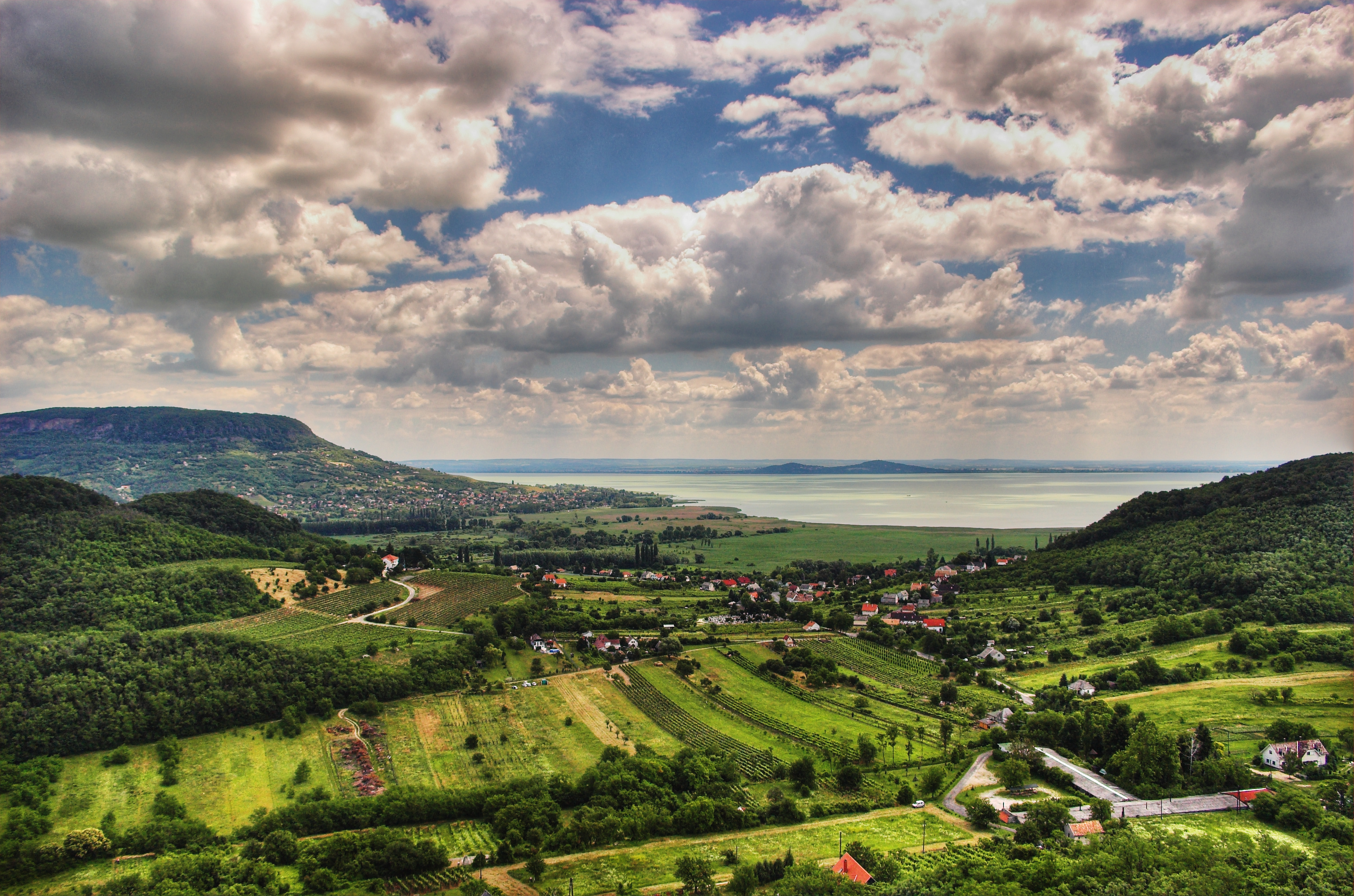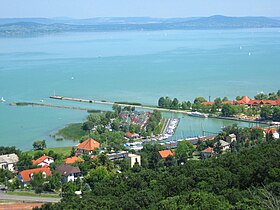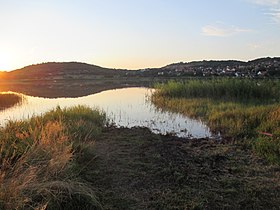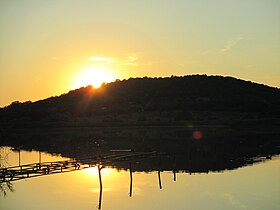
Lake Balaton
Lake Balaton (Hungarian: [ˈbɒlɒton]) is a freshwater rift lake in the Transdanubian region of Hungary. It is the largest lake in Central Europe,[3] and one of the region's foremost tourist destinations. The Zala River provides the largest inflow of water to the lake, and the canalized Sió is the only outflow.
The mountainous region of the northern shore is known both for its historic character and as a major wine region, while the flat southern shore is known for its resort towns. Balatonfüred and Hévíz developed early as resorts for the wealthy, but it was not until the late 19th century when landowners, ruined by Phylloxera attacking their grape vines, began building summer homes to rent out to the burgeoning middle class.[4]
Name[edit]
In distinction to all other Hungarian endonyms for lakes, which universally bear the suffix -tó 'lake', Lake Balaton is referred to in Hungarian with a definite article; that is, a Balaton 'the Balaton'. It was called lacus Pelsodis or Pelso by the Romans.[5] The name is Indo-European in origin, derived from Slavic *bolto (Czech bláto, Slovak blato, Polish błoto), meaning 'mud, swamp' (from earlier Proto-Slavic boltьno, cf. Slovene: Blatno jezero,[6][7] Slovak: Blatenské jazero[8]).
In January 846, the Slavic prince Pribina began to build a fortress as his seat of power and several churches in the region of Lake Balaton, in the territory of modern Zalavár surrounded by forests and swamps along the Zala River.[9][10][11] His well-fortified castle and capital of the Lower Pannonian Principality became known as Blatnohrad or Moosburg (literally, 'Swamp Fortress'), and it served as a bulwark against both the Bulgarians and the Moravians.[9][10][11]
The German name for the lake is Plattensee.[12] It is unlikely it was given that name for being shallow because the adjective platt is a Greek loanword that was borrowed via French and entered general German vocabulary in the 17th century.[13][14] It is also noteworthy that the average depth of Balaton (3.2 m or 10 ft)[15] is not extraordinary for the area (cf. the average depth of the neighbouring Neusiedler See, which is roughly 1 m or 3.3 ft).[16]
Tourism[edit]
The major resorts around the lake are Siófok, Keszthely, and Balatonfüred. Zamárdi, another resort town on the southern shore, has been the site of Balaton Sound, a notable electronic music festival since 2007. Balatonkenese has hosted numerous traditional gastronomic events. Siófok is known for attracting young people to it because of its large clubs. Keszthely is the site of the Festetics Palace and Balatonfüred is a historical bathing town which hosts the annual Anna Ball.[23]
The peak tourist season extends from June until the end of August. The average water temperature during the summer is 25 °C (77 °F), which makes bathing and swimming popular on the lake. Most of the beaches consist of either grass, rocks, or the silty sand that also makes up most of the bottom of the lake. Many resorts have artificial sandy beaches and all beaches have step access to the water. Other tourist attractions include sailing, fishing, and other water sports, as well as visiting the countryside and hills, wineries on the north coast, and nightlife on the south shore. The Tihany Peninsula is a historical district. Badacsony is a volcanic mountain and wine-growing region as well as a lakeside resort. The lake is almost completely surrounded by separated bike lanes to facilitate bicycle tourism. Although the peak season at the lake is the summer, Balaton is also frequented during the winter, when visitors go ice-fishing or even skate, sledge, or ice-sail on the lake if it freezes over.
Sármellék International Airport provides air service to Balaton (although most service is only seasonal).
Other resort towns include: Balatonalmádi, Balatonboglár, Balatonlelle, Fonyód and Vonyarcvashegy.

















